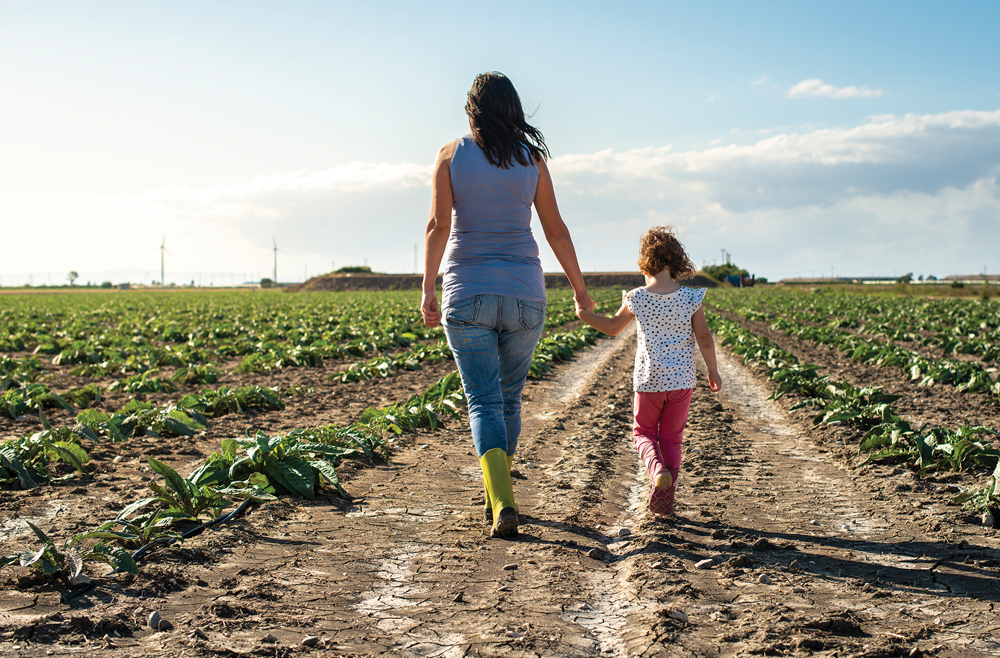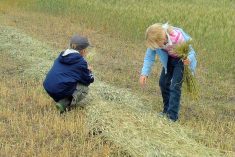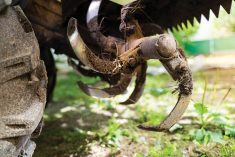When you become a parent, you realize very quickly that after that little life arrives, yours will never be the same. We invest all of the resources we have at our disposal into our children — love, attention, energy, money … the list goes on and on.
And there are so many benefits to raising children on a farm — a life of working and being outdoors, a connection to the land, nature and animals, the culture and values of a farm life, close-knit families and a strong sense of community, the development of a good work ethic and the self-esteem and pride that goes along with accomplishing farm tasks, and a shared family passion and working toward a common goal.
Read Also

Gentle treatments for pain in the neck
Heading toward year-end, people unknowingly tense up against the cold and busyness, causing neck pain that can often be treated with appropriate support and gentle mobility, athletic therapist Kathlyn Hossack says.
While there are many advantages to growing up on a farm, there is also the risk of accidental injuries or death. No one ever wants this to happen, least of all a parent. And a child fatality on a farm is unthinkable. Last year, a study came across my desk on this topic where the findings were so disturbing to me, I had to put it on my editorial topics list for this year’s Ag Safety Week starting March 14.
The study, “Fatal Farm Injuries to Canadian Children,” which appeared in the journal Preventive Medicine in August last year, examined 23 years of national Canadian Agricultural Injury Reporting fatality data to determine if farms have become safer for children who lived and worked on them over a long period. The study examined data from 1990-2012, breaking those years into two study periods of 1990-2001 for Period 1 and 2002-2012 for Period 2, which were then compared.
One of the findings of the report is particularly alarming — the mean annual rates of fatal injury per 100,000 children were similar between the two study periods. The fatality rate remained stable from 1990-2012 at about four per 100,000 farm children per year.
In 2015, the national reported rates of unintentional injury death in the general population of children in Canada range from three per 100,000 children ages one to nine years, 2.8 for ages 10 to 14 years and 11.4 for ages 15 to 19 years. These rates are about 60 to 80 per cent lower than those reported in 1990. “Farm children have not experienced the same reduction in injury mortality as other Canadian children have over the last decades,” stated the report.
In total, 374 fatal farm injuries to children aged zero to 19 years occurred between 1990 and 2012. During Period 1 of the study, there were 253 fatal farm injuries to children, while Period 2 of the study reported 121. Although the total number of deaths dropped over time, “this can be attributed to declining family farm population in Canada,” stated the report.
Still, a child fatality on a farm is an uncommon occurrence; however, even one death per year is too many.
It will be no surprise to you that tractor injuries — mainly runovers of passengers, rollovers and runovers of bystanders — were the leading causes of death involving machinery in both time periods among working and non-working children. In Period 2 (2002-12), there was an increase in the proportion of deaths attributable to all-terrain vehicles (ATVs) and skid steer loaders and decreases in the deaths caused by motor vehicles.
With respect to non-machinery causes of death among children, drownings of non-working children were the most prevalent. Those water hazards included dugouts, sewage and manure pits, and ponds, lakes, swamps and sloughs. Specific to preschool-aged children, tractor injuries and drownings were the leading causes of death during both time periods with slight increases in the proportion of deaths caused by skid steer loaders and ATVs in Period 2.
The report concludes over the study period of 1990-2012, prevention efforts and initiatives aimed at child safety on the farm “appear to have ultimately been ineffective at achieving their end goal of reducing fatalities to farm children.”
However, almost 10 years have passed since 2012, which is the most recent data included in the study. I’d be interested to see a follow-up study for the years 2013-20. During this time, there has been a noticeable effort, especially in the last five years, to put farm safety front and centre. Also, many changes can occur on a farm over a decade, including improvements to safety practices and equipment and to machinery to increase safety.
I am drawing your attention to this report from sciencedirect.com as a reminder that improvements to child safety on the family farm must remain top of mind as we head into another growing season.
To decrease child safety risks on the farm, there are provincial health and farm safety guides online and the Canadian Agricultural Safety Association has numerous resources to help you make all aspects of farm life safer for children.
Have a happy, healthy and safe spring,
Kari
















